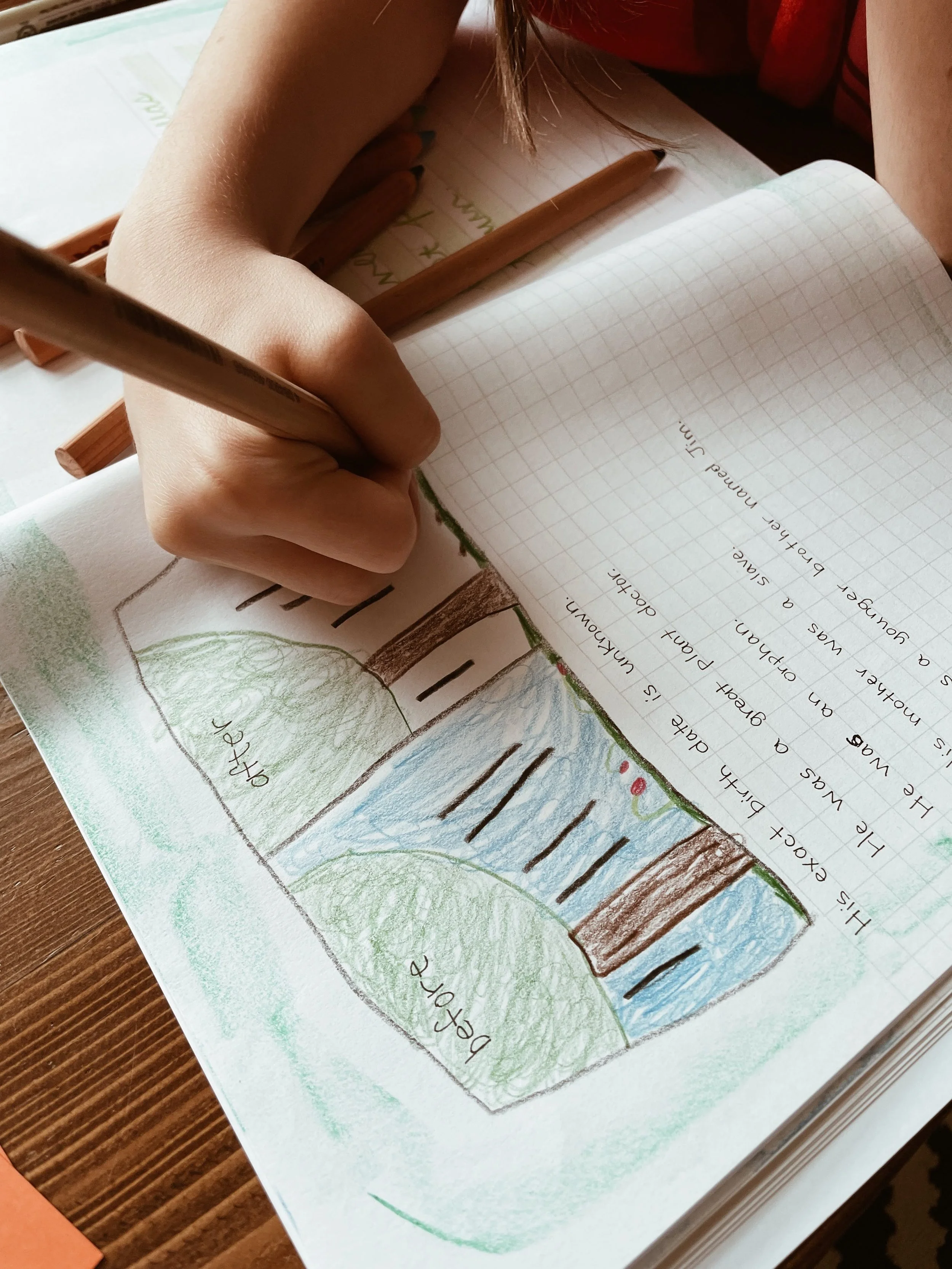What Is Notebooking? A Guide to Empowering Learning Through Creativity
How Notebooking Transformed My Approach to Homeschooling
When I first started homeschooling, I fell deeply in love with literature-based curricula. We explored the world through stories, and it was glorious! But over time, I noticed something missing: a sense of ownership in my children’s learning. Lessons felt like a lot of input, but not enough output. We practiced narration (orally telling back what was read) but I wanted to integrate more critical thinking and physical creation into our learning routine.
As we began the practice of notebooking, it really clicked for us! Instead of being in a loop of read and tell back, my children began narrating what they learned, then sketching a part of the story and crafting their own summaries to correlate with their drawings. Their notebooks became vibrant, personal portfolios of their education, filled with their own words, drawings, and ideas.
This shift didn’t just make learning more engaging—it made it theirs. The creativity, independence, and sense of accomplishment I saw in my children inspired me to design a line of notebooks to make this process even easier and more rewarding for other families.
What Is Notebooking in Homeschooling and Self-Directed Education?
Notebooking is a flexible, student-centered method of learning that allows children to document their education in personalized notebooks. Instead of simply filling out pre-made worksheets, students actively engage with the material by narrating what they’ve learned, recording key information, and illustrating concepts in their own way.
Key Components of Notebooking:
Narration: Students summarize what they’ve learned in their own words, reinforcing comprehension and retention. This can also include copywork, where they write down beautiful or important lines from their books verbatim.
Illustrations: Drawing diagrams, maps, or sketches adds a creative dimension and solidifies understanding and even aids in memory of the material.
Organization: Notebooks are often divided by subject or topic, making it easy to review and build upon prior learning. We may add to the same science notebook for multiple years, and see a progression of 2-3 years of science lessons in one little book.
Reflection: Students revisit and refine their work, developing critical thinking and a deeper connection to the material. They can also present their work to you or others, which develops their communication skills.
Notebooking works well across all subjects, from science and history to literature and art. It’s a practice that adapts to the child’s interests, learning style, and academic level.
The Benefits of Notebooking
Notebooking isn’t just a tool for documenting learning, and it is not meant to be a perfect “end product”; it’s an enriching educational practice that fosters creativity, independence, and ownership of learning.
1. Encourages Ownership of Learning
When children create their own notebooks, they take pride in their work and feel more connected to what they’re learning. Their work becomes truly theirs - something they have put thought into, and added a touch of their own personality into! This is the output that balances all of the input they receive through their lessons every day.
2. Develops Critical Thinking
Summarizing and organizing information requires students to analyze and process material in a meaningful way. Rather than just listen and take in information, they have to think about what it was they heard, find the main ideas, and put that back out onto the page in their own words or through visuals that are meaningful to them.
3. Adapts to Any Subject or Learning Style
Whether your child loves to write, draw, or make lists, notebooking is flexible enough to accommodate their preferences. You can even assist your child if they are young or need accommodations by being their scribe and writing as they speak. Recording their thoughts is powerful - because they can likely explain something at a more advanced level than they can write, and this helps them see their thoughts fully on paper at an earlier age.
4. Promotes Long-Term Retention
The act of narrating, writing, and illustrating helps children internalize knowledge more effectively than passive learning.
5. Creates a Tangible Record of Learning
Notebooking produces a keepsake—a tangible record of your child’s educational journey that they can look back on with pride. As their teacher, you will also easily be able to see their strengths and weak spots and their immense growth over time.
Creative Examples of Notebooking
Science Notebooks: Record observations from experiments, draw diagrams of the solar system, or label parts of a flower.
History Notebooks: Create timelines, map historical events, or narrate key moments in a historical figure’s life.
Language Arts Notebooks: Write book summaries (narrations), illustrate favorite scenes, or analyze characters and themes, dig deep into vocabulary or learn and review spelling words.
Nature Journals: Sketch plants and animals, log outdoor observations, and write about changes in the seasons.
Why Schoolnest Notebooks Are Perfect for Notebooking
At schoolnest, we’ve designed a line of notebooks specifically to support and inspire the practice of notebooking. With a wide variety of options for every subject, our notebooks make it easy to integrate this enriching practice into your homeschooling or self-directed learning routine.






